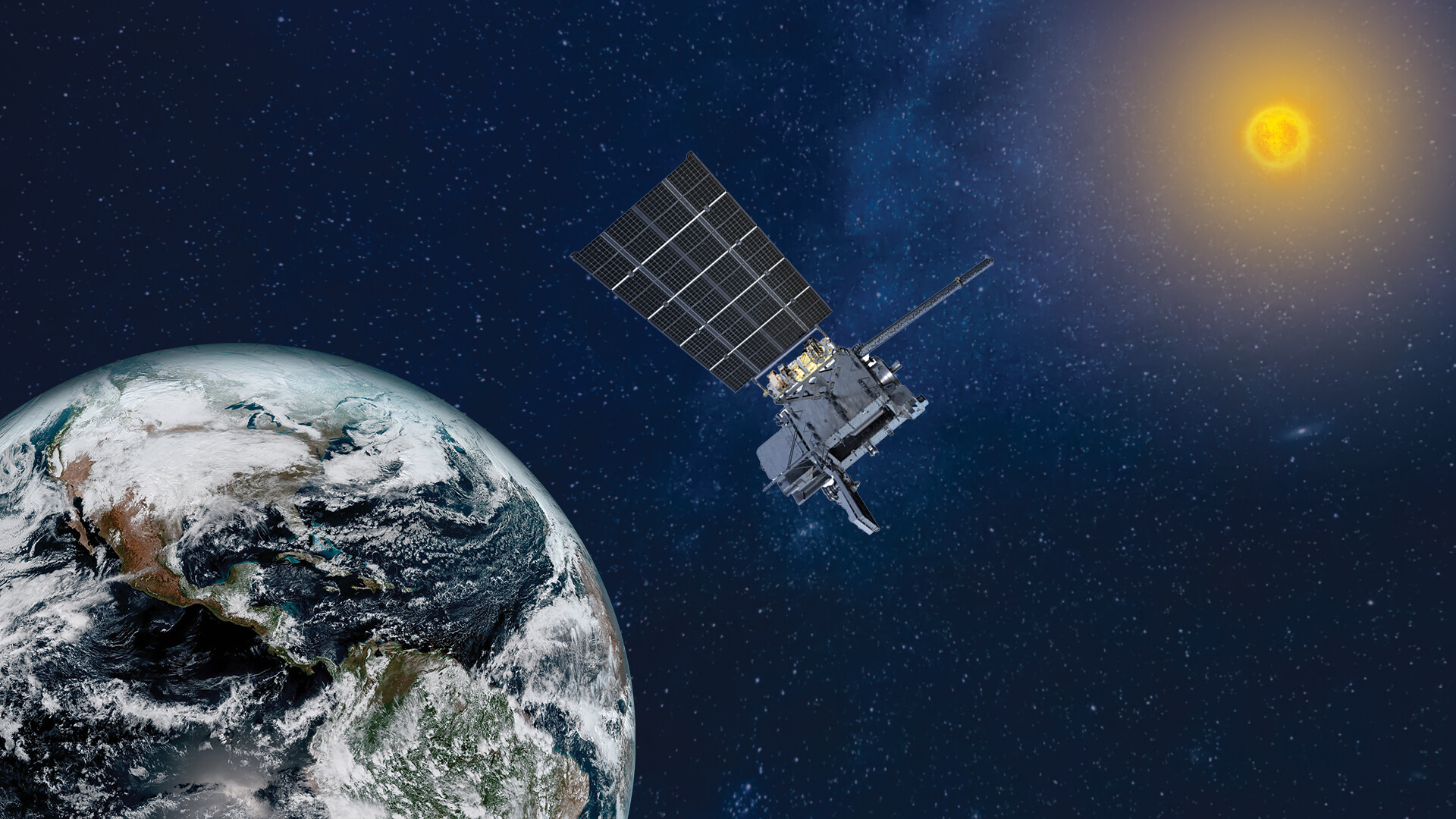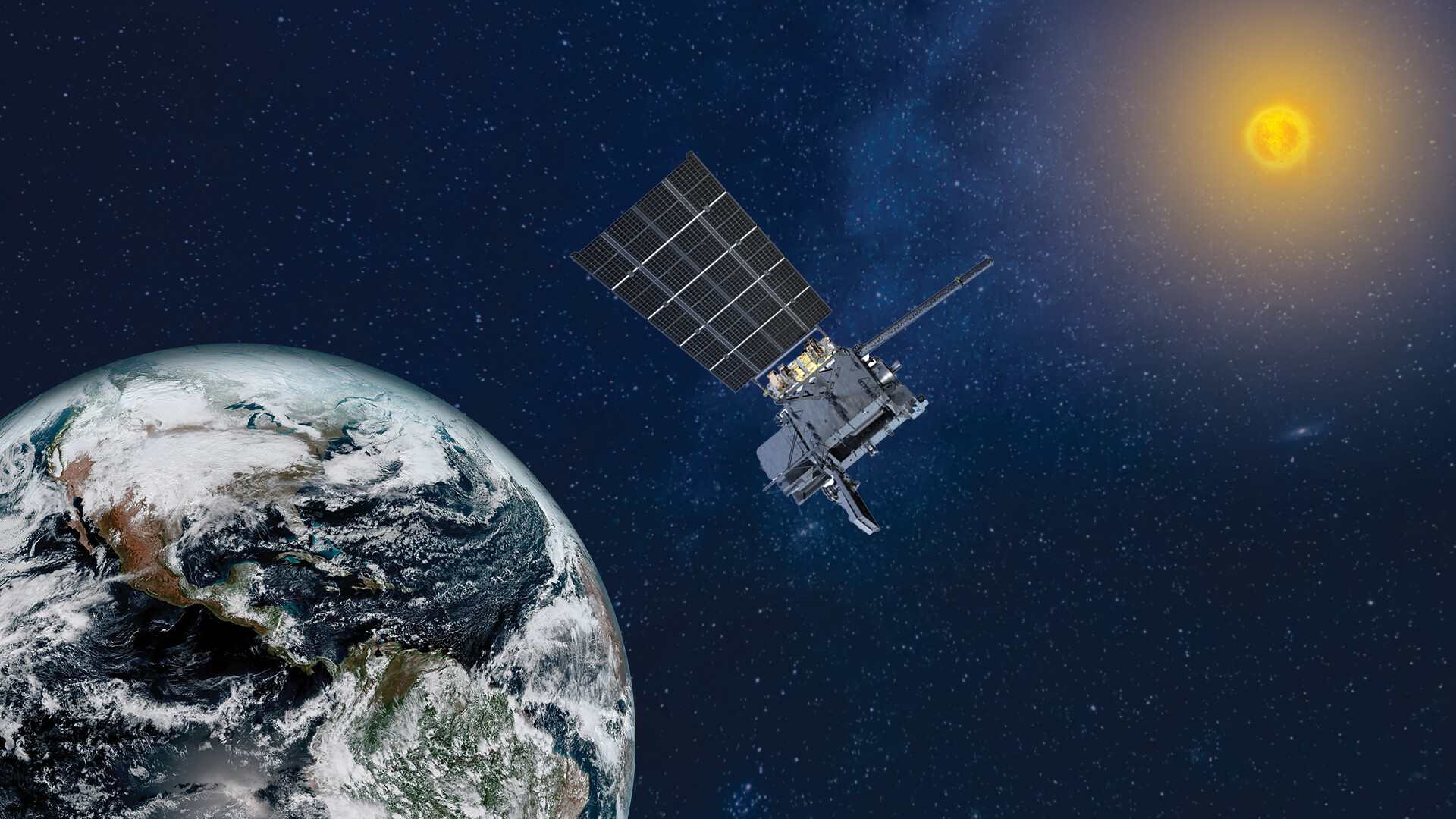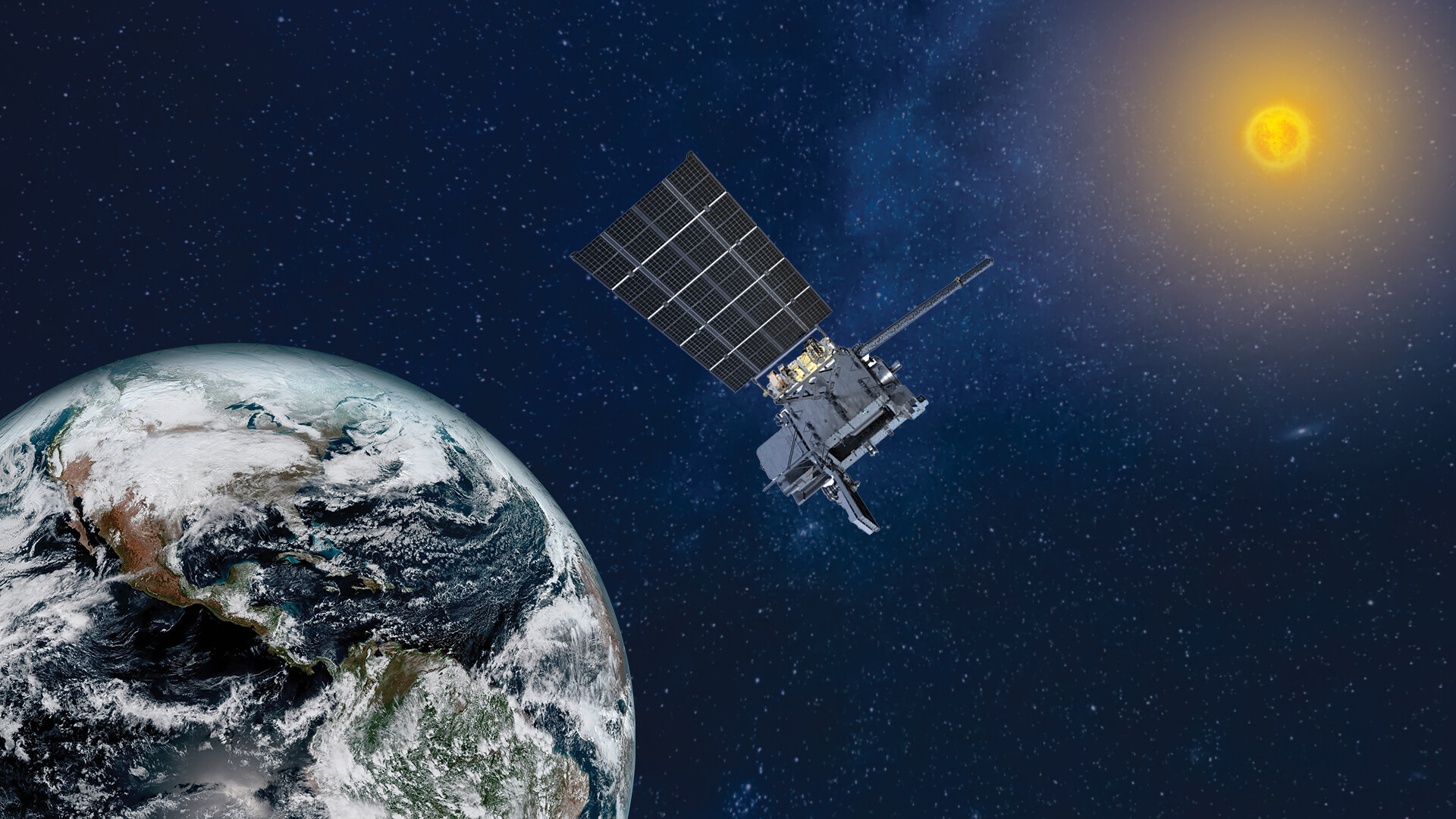 GOES-U spacecraft rendering. Credit: NOAA/Lockheed Martin NASA is preparing to launch NOAA’s (National Oceanic and Atmospheric Administration) GOES-U (Geostationary Operational Environmental Satellite U), a mission to help improve weather observing and environmental monitoring capabilities on Earth, as well as advance space weather observations.
GOES-U spacecraft rendering. Credit: NOAA/Lockheed Martin NASA is preparing to launch NOAA’s (National Oceanic and Atmospheric Administration) GOES-U (Geostationary Operational Environmental Satellite U), a mission to help improve weather observing and environmental monitoring capabilities on Earth, as well as advance space weather observations.
NASA and SpaceX are targeting a two-hour launch window opening at 5:16 p.m. EDT Tuesday, June 25. The mission will launch on a SpaceX Falcon Heavy rocket from Launch Complex 39A at NASA’s Kennedy Space Center in Florida.
The satellite will carry a suite of instruments for advanced imagery, atmospheric measurements, real-time mapping of lightning activity, and detecting approaching space weather hazards, including a new compact coronagraph that will image the outer layer of the Sun’s atmosphere to detect and characterize coronal mass ejections.
Media interested in covering the GOES-U launch must apply for media accreditation. Deadlines for accreditation are as follows:
U.S. media and U.S. citizens representing international media must apply for accreditation by 11:59 p.m., Friday, June 7. International media without U.S. citizenship must apply by 11:59 p.m., Tuesday, May 28. Media requiring special logistical arrangements, such as space for satellite trucks, tents, or electrical connections, should email ksc-media-accreditat@mail.nasa.gov by May 28.
A copy of NASA’s media accreditation policy is available online. For questions about accreditation, please email: ksc-media-accreditat@mail.nasa.gov. For other mission questions, please contact NASA Kennedy’s newsroom at: 321-867-2468.
Accredited media will have the opportunity to participate in a series of prelaunch briefings and interviews with key mission personnel. Details regarding the media event schedule will be communicated to accredited members as the launch date approaches.
NASA will post updates on launch preparations to prepare the spacecraft on the GOES blog.
As the fourth and final satellite in the GOES-R Series, GOES-U will enhance the nation’s ability to monitor and forecast weather, ocean, and environmental dynamics in real-time. The satellite has seven instruments that will provide advanced imagery and atmospheric measurements of Earth’s Western Hemisphere, real-time mapping of lightning activity, and advanced monitoring of solar activity and space weather. Following a successful launch and on-orbit checkout, NOAA will redesignate GOES-U as GOES-19. Working in tandem with GOES-18, the satellites will continuously observe Earth from the west coast of Africa to New Zealand, providing data for weather forecasting, severe storm tracking, and environmental monitoring. The GOES constellation helps protect the one billion people who live and work in the Americas.
NASA and NOAA collaborate on various missions to enhance our understanding of Earth, its climate, and its environment, enhancing the safety and well-being of all humanity. NASA’s Launch Services Program, based at Kennedy, manages the launch service for the GOES-U mission. NASA’s Goddard Space Flight Center in Greenbelt, Maryland, oversees the acquisition of the spacecraft and instruments. Lockheed Martin designs, builds, and tests the GOES-R series satellites. L3Harris Technologies provides the primary instrument, the Advanced Baseline Imager, along with the ground system, which includes the antenna system for data reception.
For further details about the GOES-U mission and updates on launch preparations, visit:
-end-
Liz Vlock
Headquarters, Washington
202-358-1600
elizabeth.a.vlock@nasa.gov
Peter Jacobs
Goddard Space Flight Center, Greenbelt, Maryland
301-286-0535
peter.jacobs@nasa.gov
Leejay Lockhart
Kennedy Space Center, Florida
321-747-8310
leejay.lockhart@nasa.gov


